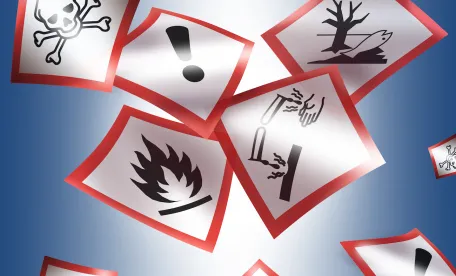In accordance with § 7321 of the National Defense Authorization Act (“NDAA”) for Fiscal Year 2020 (P.L. 116-92), the United States Environmental Protection Agency (“EPA”) has added 160 per-and polyfluoroalkyl substances (“PFAS”) to the Emergency Planning and Community Right-to-Know Act’s (“EPCRA”) § 313 list of reportable chemicals. Industry reporters must begin tracking and collecting data on the listed PFAS beginning January 1, 2020, with the first Toxics Release Inventory (“TRI”) report due by July 1, 2021.
The NDAA requires the EPA to list those PFAS that meet two criteria: (1) PFAS subject to a significant new use rule at either 40 C.F.R. § 721.9582 or 721.10536 on or before December 20, 2019; and (2) PFAS identified as active in commerce on the Toxic Substances Control Act (“TSCA”) Inventory published in February 2019. In addition to listing those substances that meet the two criteria, the NDAA also mandates the listing of fourteen specific PFAS. Of the 160 listed PFAS, perfluorooctanoic acid (“PFOA”) and perfluorooctanesulfonic acid (“PFOS”) – the two most widely known PFAS – are listed, along with hexafluoropropylene oxide dimer acid, known generally as GenX, which was originally manufactured as a replacement for PFOA and PFOS.
Industry reporters that manufacture, process, or otherwise use any of the listed PFAS in excess of 100 pounds – the NDAA-established reporting threshold – are subject to this annual reporting requirement. This threshold for reporting is far lower than typical TRI reporting.
The new reporting requirements are likely to be challenging, as the methods for estimating emissions and compiling data in other environmental media are still being developed. Further, due to the low reporting threshold, those industries using listed PFAS will be required to determine how much is being used, as such de minimis levels of the chemicals would not be recorded on Safety Data Sheets, likely leaving users to exceed the reporting threshold without knowing.
It will be important for regulated entities to quickly determine if they manufacture, process, or otherwise use any of the listed PFAS in excess of the reporting threshold to ensure compliance with EPCRA’s reporting requirements. A failure to timely and accurately report could subject an industry to statutory penalties in excess of $57,000 per day, per violation.





 />i
/>i
